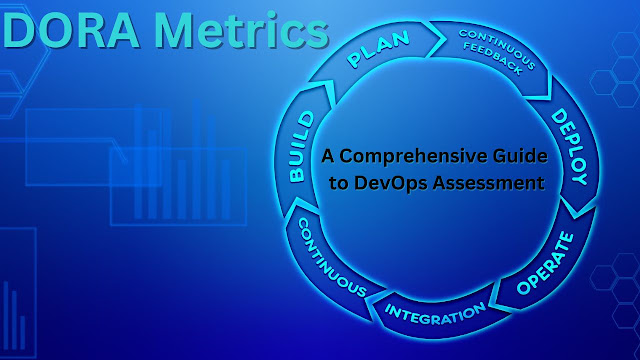Due to the complexity and quick speed of the DevOps environment, a set of quantitative indicators is required in order to guarantee that delivery and operations work together in harmony and accomplish the goals that have been defined. DORA metrics, which stand for "DevOps Research and Assessment," are at the core of this methodology that is driven by measurements. DORA measurements provide an organized blueprint to evaluate and improve software delivery and operational outputs. These metrics are widely regarded as the gold standard for evaluating the effectiveness of DevOps. Having said that, it is essential to have an appreciation not just for their capabilities but also for the limits that come along with them. The multidimensional nature of DORA measurements will be illuminated by this thorough dive into the topic.
Deciphering DORA Metrics
DORA consolidates its metrics into four central pillars, each contributing to a panoramic view of DevOps health:
Deployment Frequency (DF): Essentially, DF captures the tempo at which a team pushes code into the production environment. Whether it's several deployments daily or sporadic releases spread over months, this metric paints a picture of how swiftly and regularly new features or modifications get rolled out.
Lead Time for Changes (LT): This metric chronicles the time span from the moment code is committed until it's actively deployed in production. A shorter LT usually signifies a streamlined and efficient delivery process, while extended durations might hint at bottlenecks or procedural delays.
Mean Time to Restore (MTTR): MTTR quantifies the average duration required to bounce back from unexpected disruptions or system failures. Beyond just a measure of recovery speed, it's an indicator of a team's resilience and adaptability in the face of setbacks.
Change Failure Rate (CFR): Represented as a percentage, CFR gauges the proportion of deployments that don't go as planned, necessitating corrective measures such as patches, rollbacks, or other remedial actions. A diminishing CFR is a beacon of stability in the deployment paradigm.
The Revealing Nature of DORA Metrics
The allure of DORA metrics lies in their ability to render tangible insights:
Performance Benchmarking: By understanding where they currently stand, teams can chart a course for future enhancements.
Goal-Setting and Monitoring: Concrete metrics allow for the establishment of clear objectives and consistent monitoring of progress toward achieving them.
Evolutive Feedback: As teams adapt or incorporate new methodologies, DORA metrics shed light on the tangible impact of these changes.
Industry Comparisons: Teams can juxtapose their performance against industry norms or peer benchmarks, fostering a culture of continuous improvement.
Simply put, DORA metrics are akin to a health checkup, spotlighting the vitality of DevOps processes and indicating areas both of prowess and potential concern.
Navigating the Blind Spots of DORA Metrics
Despite their formidable utility, DORA metrics aren't without their constraints:
Probing Beneath the Surface: DORA might flag an anomaly, such as a spurt in the change failure rate, but it doesn't inherently unravel the cause. Is the spike due to deteriorating code quality, infrastructural inadequacies, or perhaps inter-team communication glitches?
The Human Dimension: Purely quantitative, these metrics might miss out on capturing the softer aspects like team dynamics, morale, and the broader organizational culture—factors that profoundly influence DevOps efficacy.
Measuring Value and Innovation: A high deployment frequency is commendable, but does it translate to tangible value for end-users? Are the frequent changes groundbreaking or just incremental? The qualitative essence of deployments remains beyond the purview of DORA metrics.
Concluding Thoughts
DORA measurements, with their ability to provide measurable insights, serve as the guiding navigational stars for enterprises as they embark on their DevOps journey. However, while embarking on a trip as complex as the DevOps journey, it is absolutely necessary to complement the factual knowledge gained through DORA with qualitative insights, feedback mechanisms, and a more in-depth comprehension of the underlying dynamics. When companies achieve this equilibrium, using the illuminative power of DORA while also being aware of the inherent blind spots that it has, they position themselves to achieve comprehensive and long-lasting success in their DevOps operations.






0 Comments